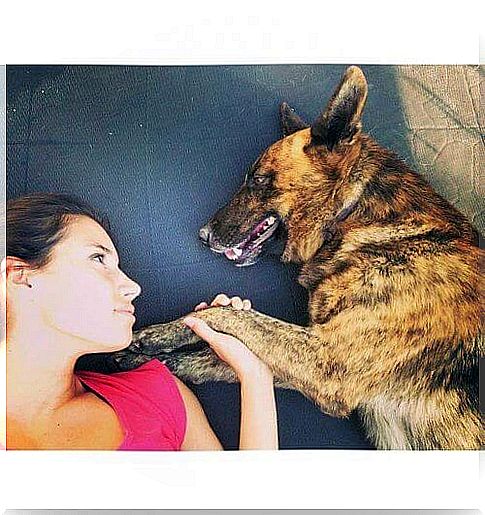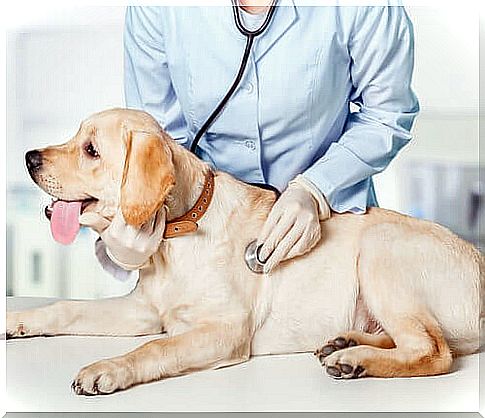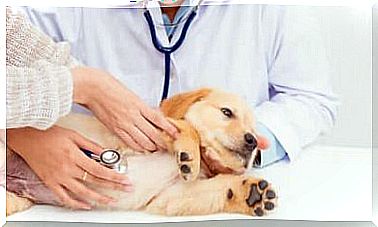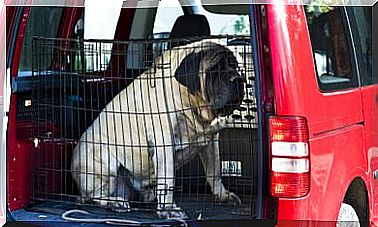Anaphylaxis In Dogs: Know What It Is And How To Treat It

Anaphylaxis symptoms in dogs
Anaphylaxis reactions in dogs are different from ours and can vary from animal to animal. Observed changes in behavior, for example, can lead some dogs to a lethargic state, while others become hyperactive, irritable or anxious.
Also, the signs of anaphylaxis in dogs can become more severe if we don’t act quickly. Many animals arrive at the veterinary clinic already in a coma, which makes their treatment difficult. In more severe cases, the animal can collapse and die.

Therefore, it is essential to go to the veterinarian immediately when you encounter the following symptoms :
- Vomiting and diarrhea.
- Hives usually accompanied by excessive itching.
- Loss of control over urination and defecation pathways. The animal suddenly urinates and defecates, is unable to control itself.
- Fluid retention and swelling, especially if you’ve been bitten by an insect.
- Hypersalivation (excess saliva production). The animal may drool constantly.
- Heavy breathing or breathing difficulties.
- Gums and pale mucous membranes.
- Apathy and/or lethargy: usually accompanied by a weak pulse.
- Hyperactivity: almost always with tachycardia.
- Convulsions, cramps and cold feeling in the extremities.
- Unconsciousness: eat.
Causes associated with canine anaphylaxis
As with symptoms , the associated causes of anaphylaxis in dogs are often diverse and vary by animal. However, the most frequent causes that can lead an animal to an anaphylactic reaction are:
- Allergic reaction to an insect sting, whether wasps, bees, mosquitoes, etc.
- Treatment with certain medications and vaccines, especially the administration of penicillin.
- Exposure or consumption of highly toxic chemical substances, products or foods , such as grapes, chocolate, poisons, etc.
Risk Factors for Anaphylaxis in Dogs
Dogs that already have diagnosed allergies are part of a group that is more likely to develop an anaphylactic reaction. Mainly those who demonstrate sensitivity to multiple factors.
But animals that have had prolonged exposure to allergens can develop an anaphylactic reaction, even without a history of diagnosed allergies.
In addition, experts point to cardiovascular disease and albinism as risk factors for anaphylaxis in dogs.
Treatment of Anaphylaxis in Dogs
Often, a dog with anaphylaxis must be admitted for immediate and prolonged treatment. Generally, intravenous fluids, antihistamines and anti-inflammatory drugs are given to stabilize the animal’s body. But the effectiveness of the treatment will depend on the state in which the animal arrives at the clinic.

When recognizing any symptoms of an anaphylactic reaction in our pet, it is essential to immediately go to the veterinarian.
Anaphylaxis in dogs: is it possible to prevent it?
The first preventive measure regarding anaphylaxis in dogs is to avoid or control the associated risk factors. If the house is in an area with a high incidence of insects, it may be better to resort to the use of repellents and insecticides for pets.
Although there are different remedies, industrial and home, it is not recommended to apply any product to our pet before consulting a veterinarian.
If our pet has never had an allergy test, it is important to inform the veterinarian. Especially if we observe changes in your eating routine, your behavior or your body.
Cardiovascular problems can almost always be prevented or controlled by adopting healthier habits. A balanced diet, regular exercise, vaccinations, deworming and proper medical care can make a difference.
Some animals already diagnosed with cardiovascular disorders may need prolonged medication, even for the rest of their lives.
It is also essential to organize the home so that potentially toxic substances are out of the dogs’ reach. Obviously, this list will include cleaning products, cosmetics, poisons, medicines, etc.









